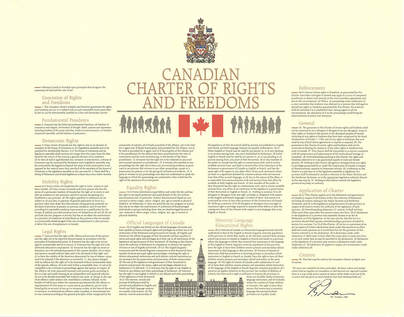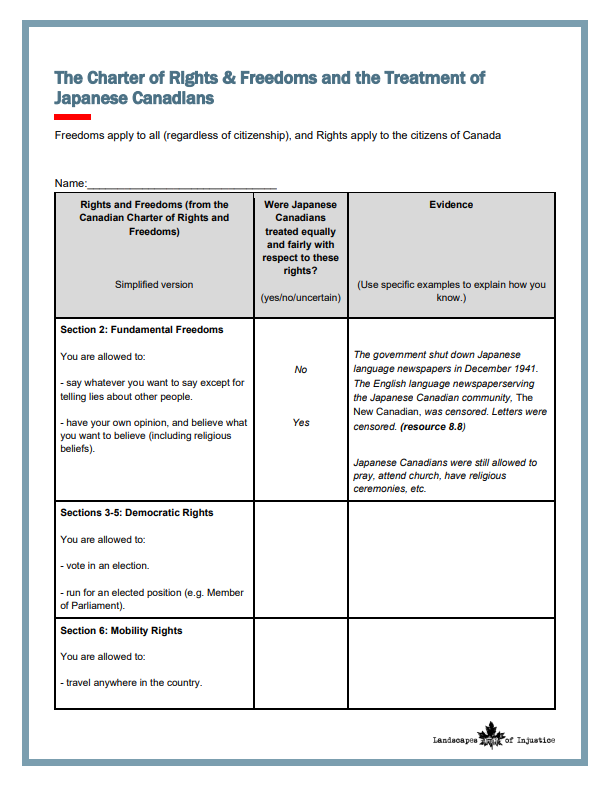1939-1952
Charter of Rights and Freedoms & Treatment of Japanese Canadians
Students determine whether or not Japanese Canadians were treated fairly with respect to certain rights that other Canadians held.
 Scroll down
Scroll down
Why
Know
- Human rights and responses to discrimination in Canadian society: Canadian Charter of Rights and Freedoms
Do
- Make ethical judgments about events, decisions, or actions (Ethical Dimension)
- Differentiate between intended and unintended consequences of events, decisions, and developments and speculate about alternate outcomes (Cause and Consequence)
Core Skills
- Identify how actions of others affect community (Social Responsibility)
- Analyze social issues from multiple perspectives (Social Responsibility)
First People’s Principles of Learning
- Learning supports the well-being of the self, the family, the community, the land, the spirits, and the ancestors
- Learning involves generational roles and responsibilities
How
MATERIALS
- Canadian Charter of Rights and Freedoms
- The Charter of Rights and Freedoms and the Treatment of Japanese Canadians Handout
- Teacher answer key
- Photographs
- Video: “Minoru”
- Website: www.japanesecanadianhistory.net
- Go over the Canadian Charter of Rights and Freedoms with students. Remind students that there was no Charter to protect Canadians until 1981 (the Charter was signed by Prime Minister Trudeau and Queen Elizabeth II in 1982), but English common law provided most of the legal safeguards in the Charter that should have protected Japanese Canadians in 1941 – such as presumption of innocence, habeas corpus, property rights, etc.
- Provide each student with the handout “The Charter of Rights and Freedoms and the Treatment of Japanese Canadians.”
- Tell students that they will be looking for evidence to support or deny the claim by Japanese Canadians that they were treated unfairly and unjustly. Show the video “Minoru: Memory of Exile,” if possible.
- The teacher and students examine the photos and decide which rights were upheld or violated and fill in the appropriate sections on the chart.
- Discuss. (See suggested questions below in Assessment Considerations.)
- Students complete journal reflection. (See suggested journal reflection prompts below in Assessment Considerations.)
Assessment Considerations
SUGGESTED DISCUSSION QUESTIONS / JOURNAL REFLECTION PROMPTS
- How did not having a Constitution/Charter of Rights and Freedoms affect the treatment of Japanese Canadians?
- Why is the Charter of Rights and Freedoms important for making sure everyone is treated fairly?
- What is your idea of fairness (now)? What is Canada’s idea of fairness?
SUGGESTED TASK
- Student handout “The Charter of Rights and Freedoms and the Treatment of Japanese Canadians”
Extension and Variations
ALTERNATIVE PROCEDURE
Jigsaw: Divide students into teams and make each team responsible for one area or one document. They fill in their part and share it with the rest of the group. Once all teams have shared, they should be able to complete the entire chart. Have students write about other (human) rights that were violated. (e.g. education, health care, etc.).

